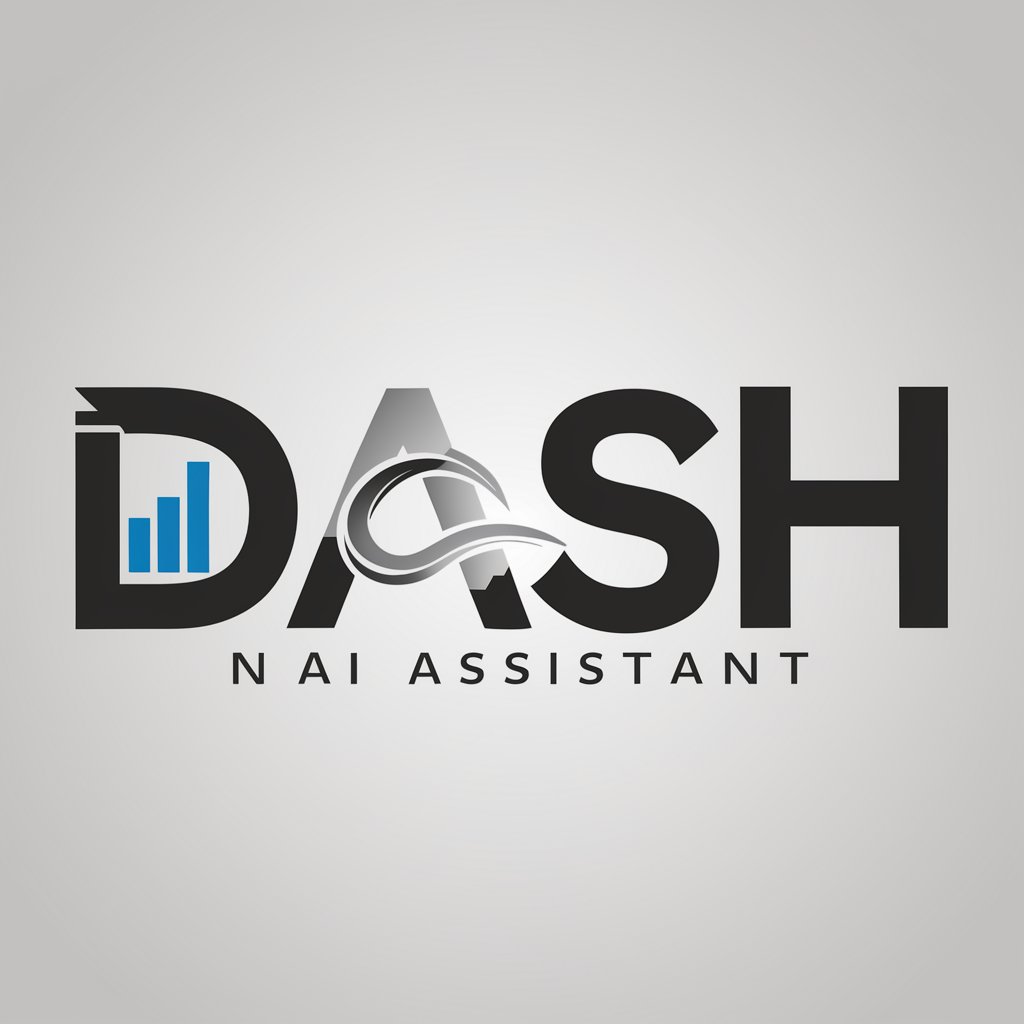dash - Interactive Dashboards Creation

Hello! Ready to create amazing Dash visualizations today?
Turn data into interactive stories
How can I create a custom callback function in Dash to update multiple components?
What's the best way to handle real-time data updates in a Dash application?
Can you guide me through setting up a dropdown menu with dynamic options in Dash?
What are some best practices for optimizing the performance of a Dash app with large datasets?
Get Embed Code
Introduction to Dash
Dash, developed by Plotly, is a Python web application framework designed for building interactive web-based data visualizations. Its primary purpose is to enable users, especially data scientists and analysts, to turn their data analysis into interactive web applications without requiring deep knowledge of web development languages like HTML, CSS, or JavaScript. Dash applications are composed of two parts: the layout, which describes what the application looks like and is built using Dash components, and the callback, which describes the interactivity of the application. Dash is highly extensible and works well with data analysis tools in Python such as Pandas, NumPy, and Plotly for data visualization. Powered by ChatGPT-4o。

Main Functions of Dash
Data Visualization
Example
Creating interactive graphs using Plotly with Dash components like dcc.Graph.
Scenario
A financial analyst uses Dash to build an interactive dashboard displaying real-time stock market trends and performance metrics.
UI Interactivity
Example
Using callbacks to update UI components like dropdowns, sliders, and buttons based on user interaction.
Scenario
In a retail analysis dashboard, a user selects a product category from a dropdown, and the dashboard updates to show sales data specific to that category.
Real-time Data Updating
Example
Utilizing Interval components to refresh data sources at specified intervals.
Scenario
A logistics company uses Dash to create a dashboard that updates every minute, showing the live location and status of delivery vehicles.
Ideal Users of Dash
Data Scientists and Analysts
Professionals who need to visualize and present data in an interactive format will find Dash invaluable for building analytical web applications without extensive web development experience.
Academics and Researchers
Academic professionals can use Dash for visualizing research data, creating interactive figures for publications, or teaching complex concepts.
Business Intelligence Professionals
BI professionals can leverage Dash to create interactive dashboards and reports that help businesses make data-driven decisions.

Getting Started with Dash
Initiate Your Journey
Visit yeschat.ai to explore Dash's capabilities with a free trial, no sign-up or ChatGPT Plus required.
Install Dash
Install Dash and its dependencies in your Python environment using pip: `pip install dash`. This includes Flask for the web server, Plotly for the interactive graphs, and React.js for the frontend.
Create Your First App
Start by importing Dash and creating an instance of the Dash class. Define your app's layout with HTML and Dash components, and specify callback functions for interactive elements.
Run Your App
Execute your app with `app.run_server(debug=True)` to start the local server. Visit the URL provided in your terminal to view your app.
Explore and Expand
Experiment with different Dash components and layouts to enhance your app. Use the Dash documentation and community forums for inspiration and troubleshooting.
Try other advanced and practical GPTs
Dash
Empowering development with AI

Dash Diet Helper
Revolutionizing DASH Diet with AI

Dash Developer & Data Science
Transforming Data Science into Interactive Web Experiences

Guitar Guru
Master the Guitar with AI

Receipt Keeper
Streamline your spending with AI-powered receipt categorization.

ToCo gastos
Your smart finance assistant, powered by AI.

Dash Plotly Pro
AI-powered tool for Dash development

Leiderschapscoach situatie analyse
Empower Leaders with AI-Powered Insights

Movie Picker
Your AI-Powered Film Finder

Career Coaching Service
Empowering Your Career Path with AI

jude
Crafting Comfort with AI

위로의 동반자
Your AI-powered Emotional Companion

Frequently Asked Questions about Dash
What is Dash primarily used for?
Dash is primarily used for creating interactive web-based data visualizations and dashboards directly from Python, without requiring complex web development skills. It's popular in data science and analytics for its ease of use and flexibility.
Can Dash apps be deployed online?
Yes, Dash apps can be deployed to various platforms, including Heroku, AWS Elastic Beanstalk, and others. Dash Enterprise offers additional features for enterprise-level deployment and scalability.
How does Dash handle interactivity?
Dash uses callback functions to handle interactivity. These callbacks link UI elements, such as buttons or sliders, to Python functions, allowing the app to dynamically update content based on user inputs.
Is Dash suitable for real-time data visualization?
Yes, Dash supports real-time data visualization through components like dcc.Interval for periodically updating app content, making it suitable for applications like live dashboards and monitoring systems.
What makes Dash unique compared to other web frameworks?
Dash is unique for its simplicity and Python-centric approach, enabling data scientists and analysts to build interactive web apps and dashboards without extensive web development experience. It integrates closely with Plotly for high-quality charts and graphs.
